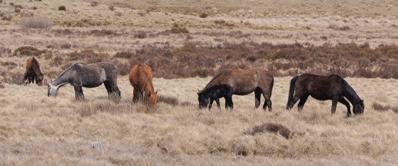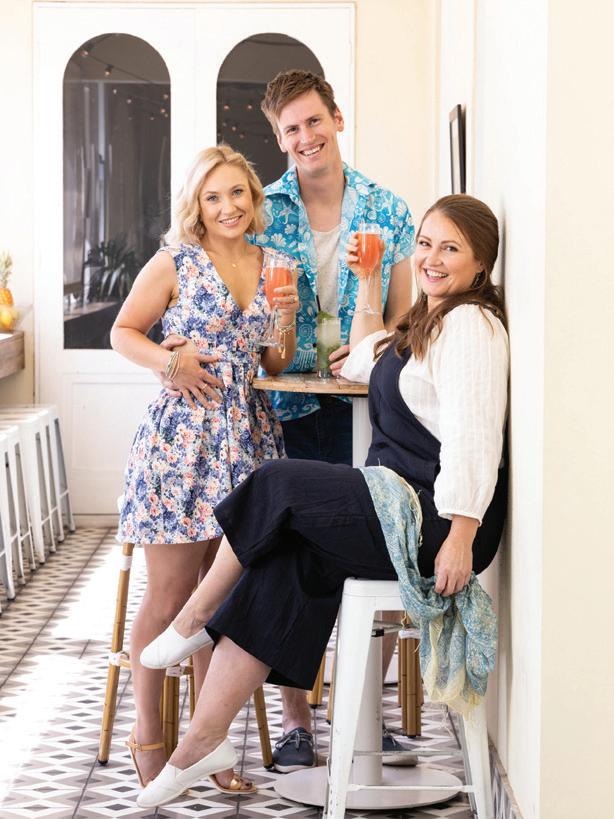
4 minute read
General news
Parties find common ground on forensic sexual assault services
The ACT Legislative Assembly has once more united on sexual assault. Following last week’s tripartisan support for a working group, there was unanimous support the next day for Liberal deputy leader Giulia Jones’s motion to ensure the public knew what to do and who to call after sexual assault, and that a forensic sampling service and support workers were available all the time.
Health Minister Rachel Stephen-Smith (Labor) and Greens Health spokesman Johnathan Davis amended the motion, following “good-natured”, “constructive” discussions.
“We are a good Chamber, and though we have different recipes, there is a lot of desire here to see improvements for the people of the ACT,” Mrs Jones said. “Sometimes we can, and we should, and we will, work together.”
Women comprise 86.6% of sexual assault victims in the ACT, Mrs Jones noted, but nine in 10 victims do not inform the police. Fewer than a third of complaints lead to legal action. Although the number of complaints made has increased, the number of trials has more than halved in the last five years. Gathering DNA evidence is necessary to make prosecution and trials more likely, she said.
“Justice for victims of sexual assault may not occur instantly, but without this evidence … convictions are very difficult. Victims, survivors go on suffering while their perpetrators walk away and go on often to assault further people and inflict additional harm.”
Canberra’s forensic sample collection service, Forensic and Medical Sexual Assault Care (FAMSAC), operates out of the Canberra Hospital, and also services Calvary Hospital.
Mrs Jones was concerned that because sexual assault victims had to give consent, people with alcohol in their system may have to wait hours, unable to eat, wash, or change their clothes – which can worsen trauma.
She believed a mobile FAMSAC service, attending victims in homes, workplaces, or other public places, would make the process smoother.
Ms Stephen-Smith said that hospital was the best place, as DNA samples could be contaminated outside hospital. However, she would revisit the matter.
The Canberra Rape Crisis Centre – “the best option for immediate aftermath counselling” (Mrs Jones) – has a support person available from 7am to 11pm each day. Mrs Jones said she understood the service was once funded to be 24 hours a day; she would like two counsellors available all the time.
“The Canberra Rape Crisis service cannot completely be available for those in this city if they cannot get to those who need them 24/7.”
Mrs Jones also called for a single point of contact phone number for sexual assault.
Ms Stephen-Smith noted that ACT Government websites listed different telephone numbers, and that FAMSAC had different business and after-hours numbers. The ACT Health Directorate is reviewing this matter.
Also concerned about low prosecution rates, Mr Davis proposed that resourcing for and developing specialist expertise within the police’s sexual assault and child abuse team should be adequate.
The Government will report back to the Assembly on these matters in August. - Nick Fuller
Release of feral horses ‘makes a mockery’ of NSW commitment
News that one third of all feral horses trapped in Kosciuszko National Park since July 2020 have been released by the NSW National Parks and Wildlife Service (NPWS) has outraged members of the ACT Government.
ACT Minister for Land Management Mick Gentleman said the NSW Government needed to “come to the table” with a stronger management plan, consistent with those in ACT and Victoria.
“Releasing feral horses back into Kosciuszko National Park makes a mockery of the NSW Government’s recent commitment to reducing numbers, and underscores how unrealistic and ineffective trapping and rehoming methods are,” he said.
There are over 14,000 feral horses across Kosciuszko National Park, according to a spring 2020 population survey by NPWS.
A NPWS spokesperson said 767 horses were trapped in Kosciuszko National Park from 1 July 2020 to 26 March 2021.
Of those, 484 were removed from the Park - 96% of which have been rehomed.
But 279 feral horses were not removed from the Park. Instead, they were set free.
“They were released from trap yards in the Park for welfare reasons, including heavily pregnant mares and young foals which are not fit for transport,” the NPWS spokesperson said.
“The approach to trapping reflects a commitment to reducing horse numbers while maintaining the highest possible welfare standards.”
In 2018, the NSW Government passed an Act to recognise and protect “wild horse heritage values”, while enabling active management of their population to reduce their impact on “the Park’s fragile environment”.
In 2020, the ACT Government released a feral horse management plan that proposed population control methods including ground and aerial shooting, “humane destruction on site” and “fertility treatments” on feral horses, were the NSW population to pass ACT borders.
Invasive Species Council CEO Andrew Cox said the NSW Government was “failing dismally to stop the spread of feral horses on their side of the border”.
Mr Cox praised the Victorian Government’s new feral horse action plan, which he said followed in the footsteps of the ACT Government’s zero-tolerance position on feral horses and left NSW “in the dark ages”.
There is “significant opportunity” for feral horses to enter Namadgi National Park, according to the ACT Government’s management plan.
It found local drinking water, threatened species, heritage sites with significance to Ngunnawal people, and endangered wetlands would be at risk if feral horses expanded their territory to include Namadgi.
ACT Minister for the Environment Rebecca Vassarotti said it was time for the NSW Government to “stop protecting destructive feral horses at the expense of our environment and unique biodiversity”.
A new draft feral horse management plan is set to be released by NSW Government before July 2021. - Rosa Ritchie
There is “significant opportunity” for feral horses to enter Namadgi National Park from neighbouring Kosciuszko National Park, according to the ACT Government.





